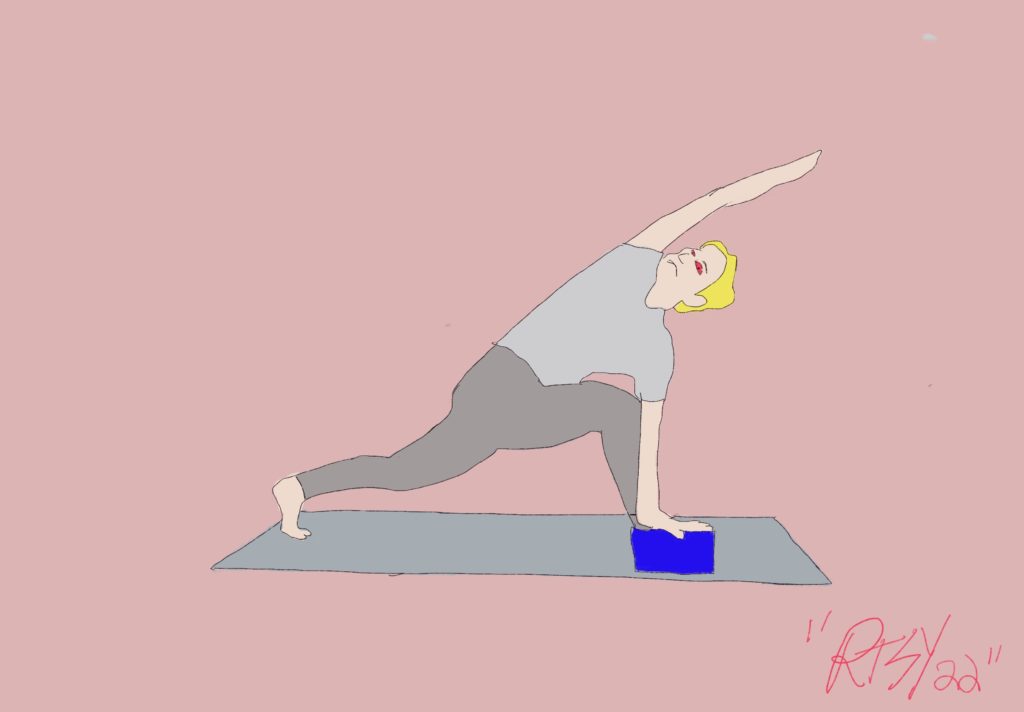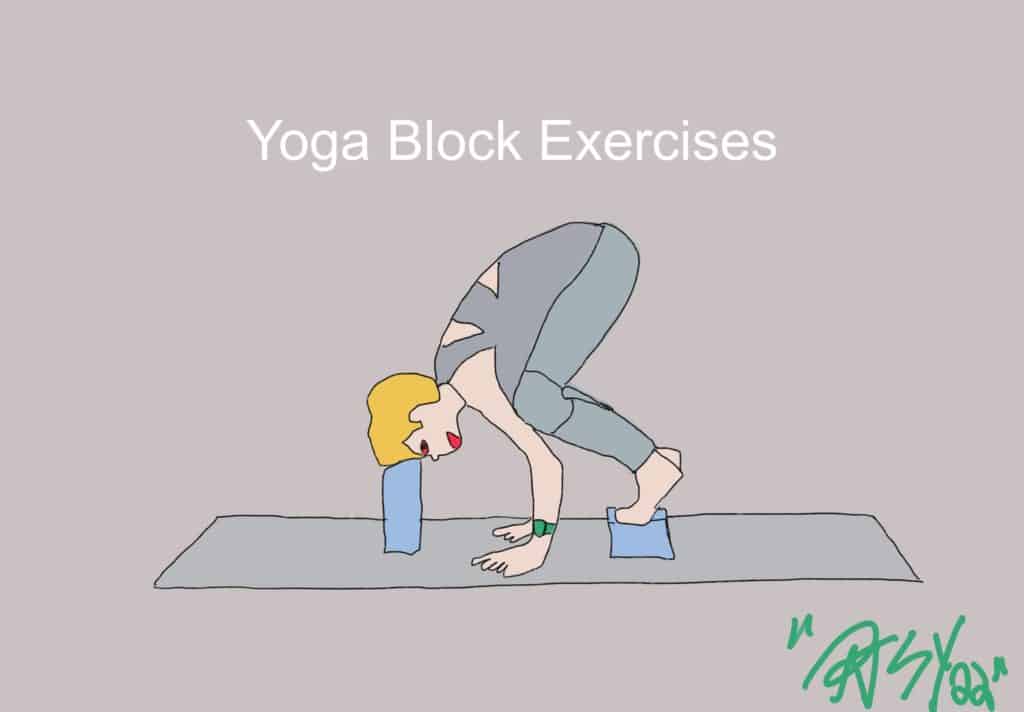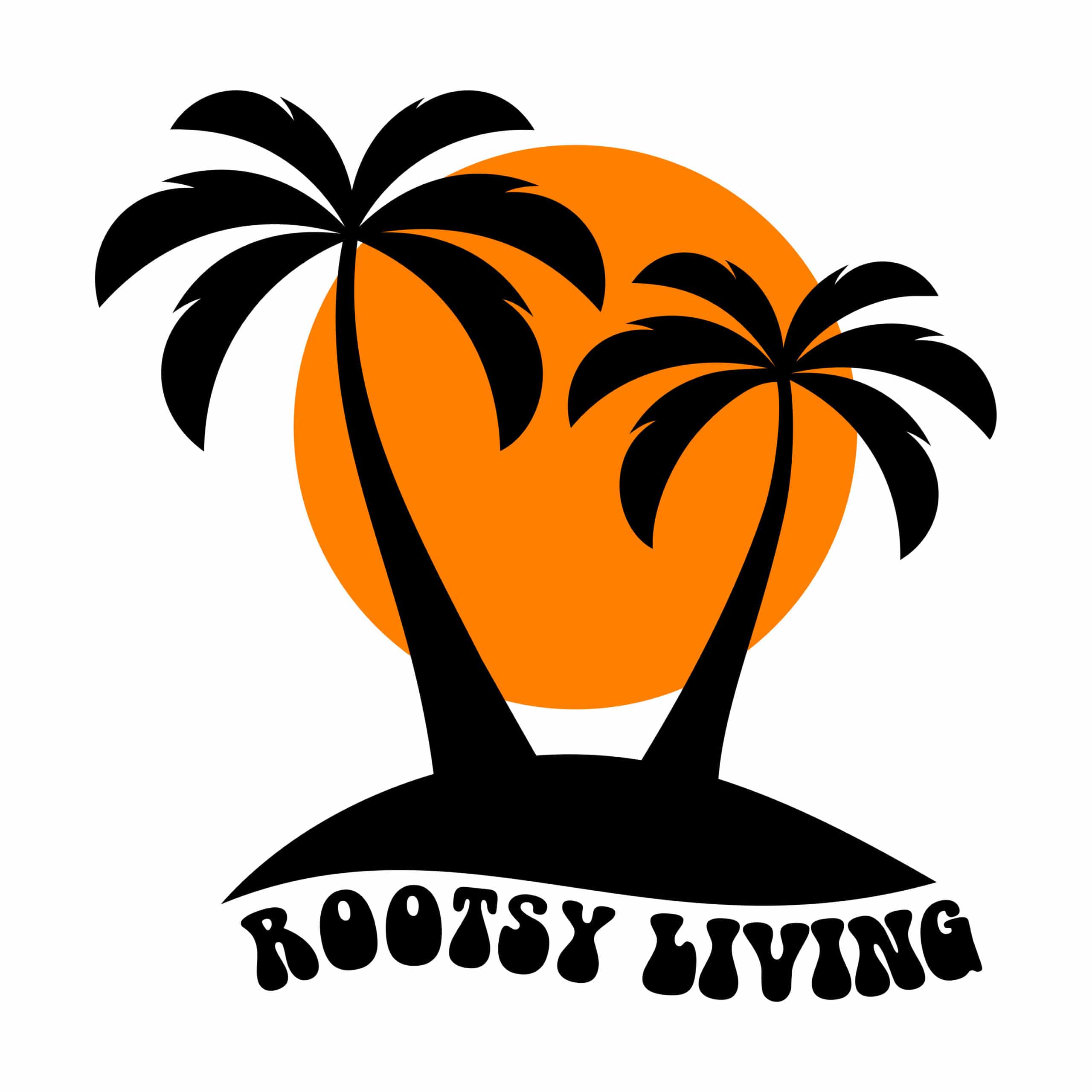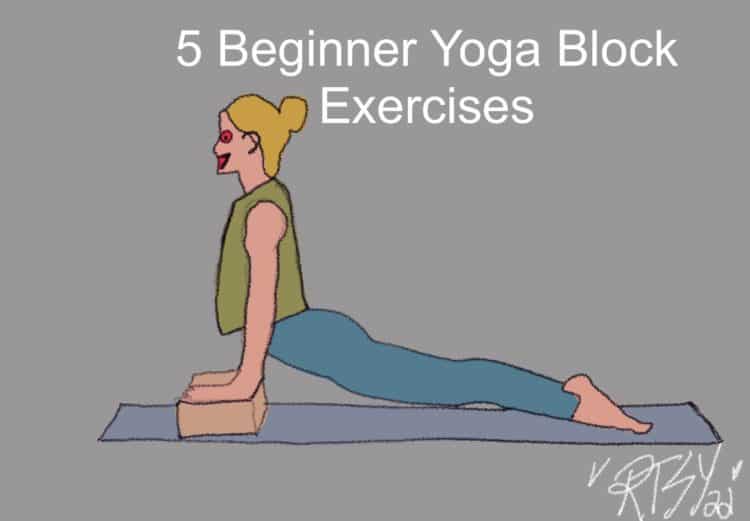Yoga blocks are fitness props used to perform yoga, Pilates, and other strength training practices. They are often especially helpful for beginners who may need a bit more support with certain positions and movements. Using props to make your yoga practice stronger also helps to make your mind and body stronger and should be apart of your daily routine.

If you’ve never used a yoga block before, you’ll be sure to notice their benefits right away. Let’s take a look at five beginner yoga block exercises you can try today.
Table of Contents
5 Yoga Block Exercises for Beginners
1. Glute Bridge
This exercise is great for developing your glutes (the muscles in the buttocks). It can be performed without a yoga block, but one common mistake that practitioners often make with this exercise is splaying their knees out to the sides too much, which can inhibit the positive effects of the exercise. A yoga block is perfect at improving this element of your form.
To perform a glute bridge with a yoga block, lay on your back on a yoga mat, and lift your legs up so that your knees are pointed toward the ceiling and there is about one foot between your glutes and your heel. Put the yoga block in between your knees, and close your knees together so that you do not let the yoga block fall.
Put your arms at your sides with your palms down, and look up at the ceiling. Slowly, lift your bottom and lower back off the floor, keeping your knees secure on either side of the yoga block. Lift your bottom and back as high as you can and hold for a count of five before slowly lowering back down again. All the while, make sure you’re keeping your grip on the block between your knees.
2. Half Moon Pose
Half moon pose is great for stretching the hamstrings and strengthening and lengthening the thighs and ankles. It’s also an excellent balance exercise. We like it for one of the best yoga block exercises because, if you’re new to yoga, it can be tough to balance without a block at first.
To perform the half moon pose, first make sure that your yoga block is reachable on the floor. Then, stand on your yoga mat with your feet at hips’ distance apart. Slowly, reach down to place your hands about a foot and a half in front of each of your feet (right hand in front of your right foot and left hand in front of your left foot). If you have to slightly bend your knees, that’s okay.
Next, put your yoga block underneath your right hand. As a beginner, start with the yoga block on its short end (so that it’s the tallest it can be). Now, square your hips to the floor and lift your left leg behind you, straightening it out as you do so and turning your torso to the left.
3. Off-Set Pushup
Pushups are a wonderful body weight strength training exercise. The plank pose itself strengthens the core, your back, your leg muscles, and your arms and shoulders. If you are comfortable doing a regular pushup, you might try progressing this exercise by using a yoga block.
The reason we like the offset pushup as one of the best yoga block exercises is that it allows your arms to work at different intensities. One arm — the arm that is not propped up by the yoga block — is working a little harder than the other arm. Here’s how to perform this exercise.
Get into your regular pushup position (if you’re more comfortable doing kneeling pushups, that’s okay too). Underneath one of your hands, put the yoga block with its biggest face flush to the ground. Put your hand right on top of the yoga block and start doing your pushups as usual.
Because one of your arms will be working a little harder than the other, you’ll want to do the same number of reps on both sides. In other words, change the yoga block from one side to the other side halfway through this exercise.
4. Yoga Block Twist
This exercise works your abdominal muscles. It’s actually an exercise that is usually performed with a medicine ball, but this is a great yoga block exercise for beginners because a yoga block can be used in place of a medicine ball, and it weighs a lot less!
To perform a yoga block twist, sit down on your yoga mat and bend your knees in front of you so that just your heels are touching the mat. While engaging your abdominal muscles, hold the yoga block between your hands with your arms stretched out straight in front of you.
Now, continue to engage your abdominal muscles and lean slightly back so that your trunk and the tops of your thighs create a ‘V’. Using your abdominal muscles to start and stop the motion, twist your trunk slightly toward the left, keeping the yoga block between your hands outstretched in front of you. Now, twist back toward the right.
Don’t twist so much that you strain your spine, but just enough so that you feel it in your abs. Try not to move your bottom half. Continue the move for ten to twelve reps on each side.
5. Seated Yoga Pose
Sitting cross-legged on the floor isn’t as easy as it looks, especially for beginners. To round out your practice, a yoga block can be very useful. It will help you sit with crossed legs on the floor while keeping your spine straight.
This is a wonderful position to use at the beginning of your yoga practice and at the end. It’s especially helpful for individuals who have problematic backs or tight hips.
To use your yoga block in a seated cross-legged position, place the yoga block on its largest face on your yoga mat and set your bottom squarely on top of the block. Allow your knees to fall forward in the cross-legged position so that the point of each knee touches the ground. Now, straighten and lengthen your spine.

Yoga block exercises are great at helping to make basic yoga poses and movements easier for beginners. They can also be extremely useful with body weight strength training exercises as well as with 3 person yoga poses as they can help you build more muscle and improve definition. If you don’t already have a yoga block in your fitness tool inventory, be sure to get one so that you can give these exercises a try on your own.

